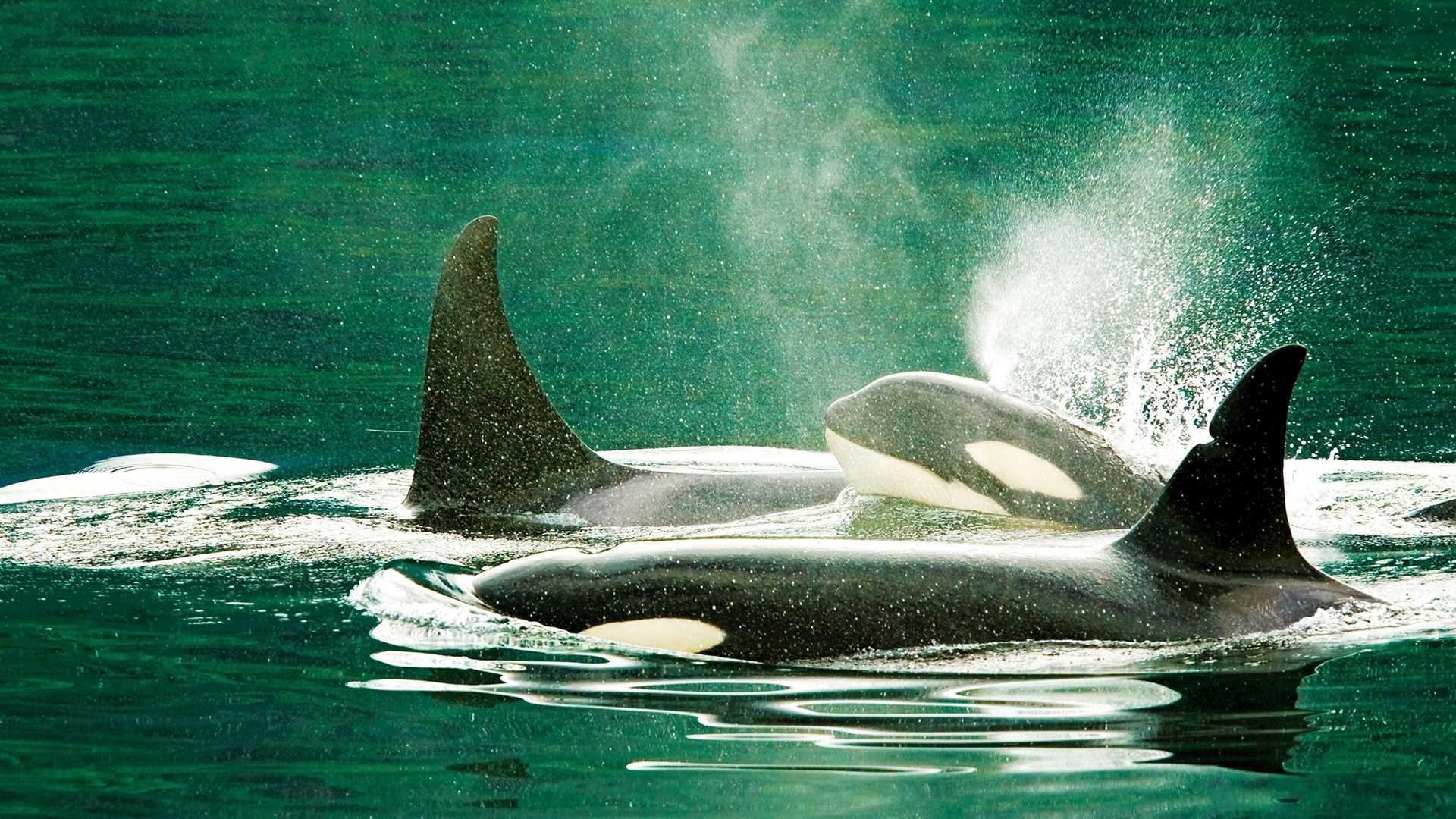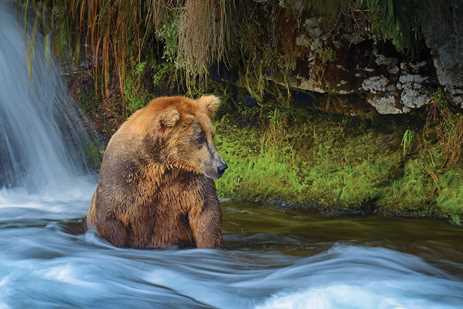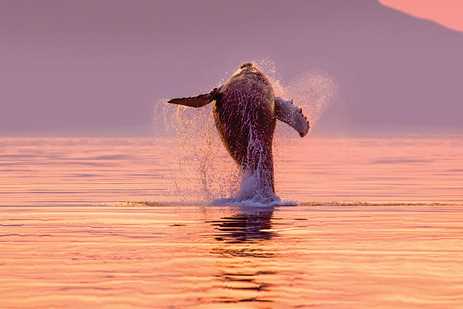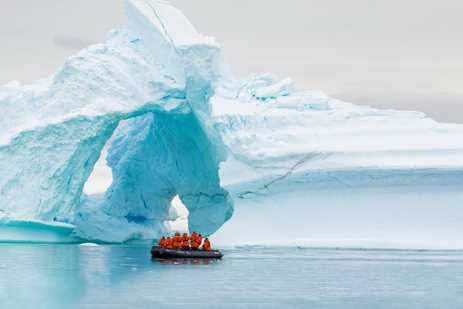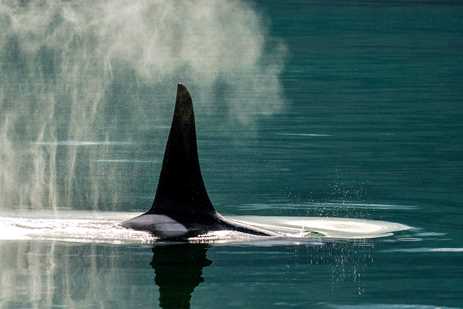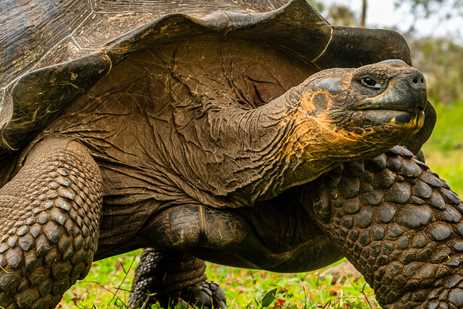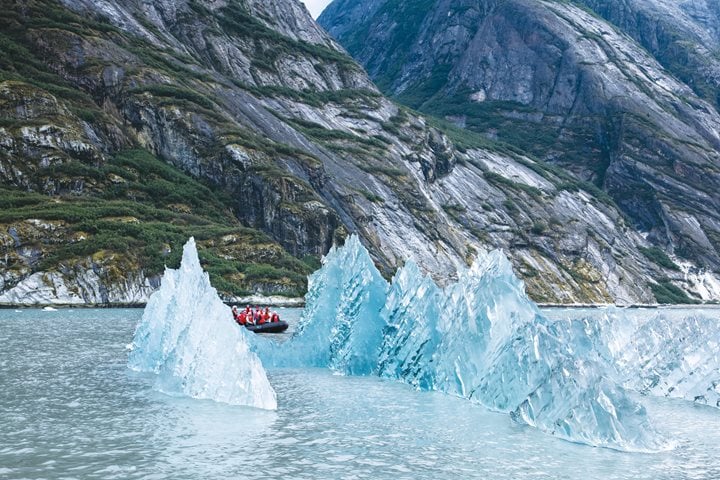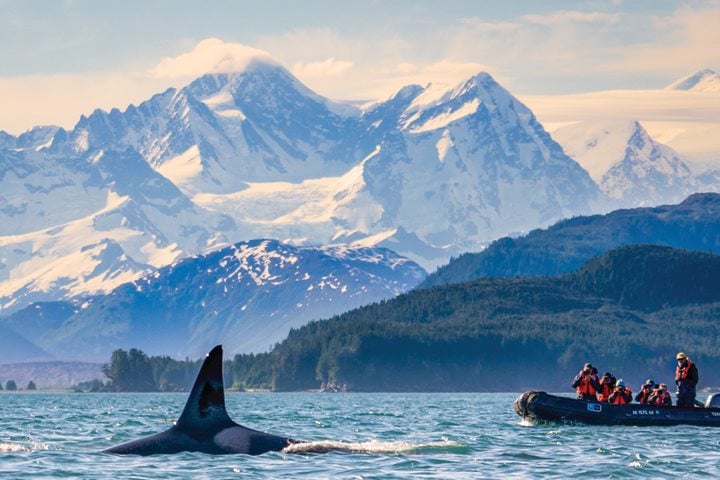Call +1.800.397.3348 or contact your travel advisor
Get to know the ocean's apex predator
Order: Artiodactyla
Family: Delphinidae
Genus: Orcinus
Species: O. orca
Range: Found in every ocean throughout the world, although they generally prefer higher latitudes and coastal areas
Population: Approximately 50,000
Key Traits: Black and white patterned body; 40-56 interlocking conical teeth; blunt snout; large prominent dorsal fin; males are typically 6 to 8 meters long (20-26 feet) and weigh more than 6 tons; females are typically 5 to 7 meters long and weigh 3-4 tons.
Orcas or killer whales are toothed whales that are actually part of the oceanic dolphin family, making them the largest of the dolphin species. Similar to dolphins, orcas are intelligent and social and have rounded heads, beaks, teeth, and streamlined bodies. Watch the video to learn more about this majestic marine mammal.
Read more
Spotting a pod of orcas in the wild is nothing short of exhilarating. With their striking black and white markings, towering dorsal fins, and sleek silhouettes, these marine mammals are captivating to watch. Since they can be found in all the world's oceans, there are opportunities to encounter them on a variety of different expeditions around the globe. Get Inspired By Photos, Videos, Webinars, Stories, And Exclusive Offers. Sign Up
Search for orcas in the remote waters of the San Juan Islands >
Orcas are highly social creatures who live in family groups with up to 50 members. Known as matrilines, these pods are made up of complex social hierarchies with the elder females at the top. Both male and female offspring tend to stay with their mothers for their entire lives, though males will leave briefly to mate with other pods before returning home. While pods have their own distinctive calls for communicating, they will associate with other pods and sometimes come together to form even larger, temporary groups.
One of the most remarkable things about these apex predators is their coordinated hunting tactics. They have an array of strategic techniques that includes intentionally beaching themselves to capture unsuspecting seals up on shore and wave washing seals to knock them off ice floes into the water. Other tactics include herding fish into a tight ball before stunning them with tail slaps or flipping sharks over onto their backs to immobilize them. Handed down through mulitple generations, these techniques vary from region to region depending on available food sources, but each one is a testament to the orca's intelligence and ingenuity.
Guests aboard the National Geographic Explorer had a riveting front-row seat to the wave washing technique. Watch the dramatic encounter unfold.

